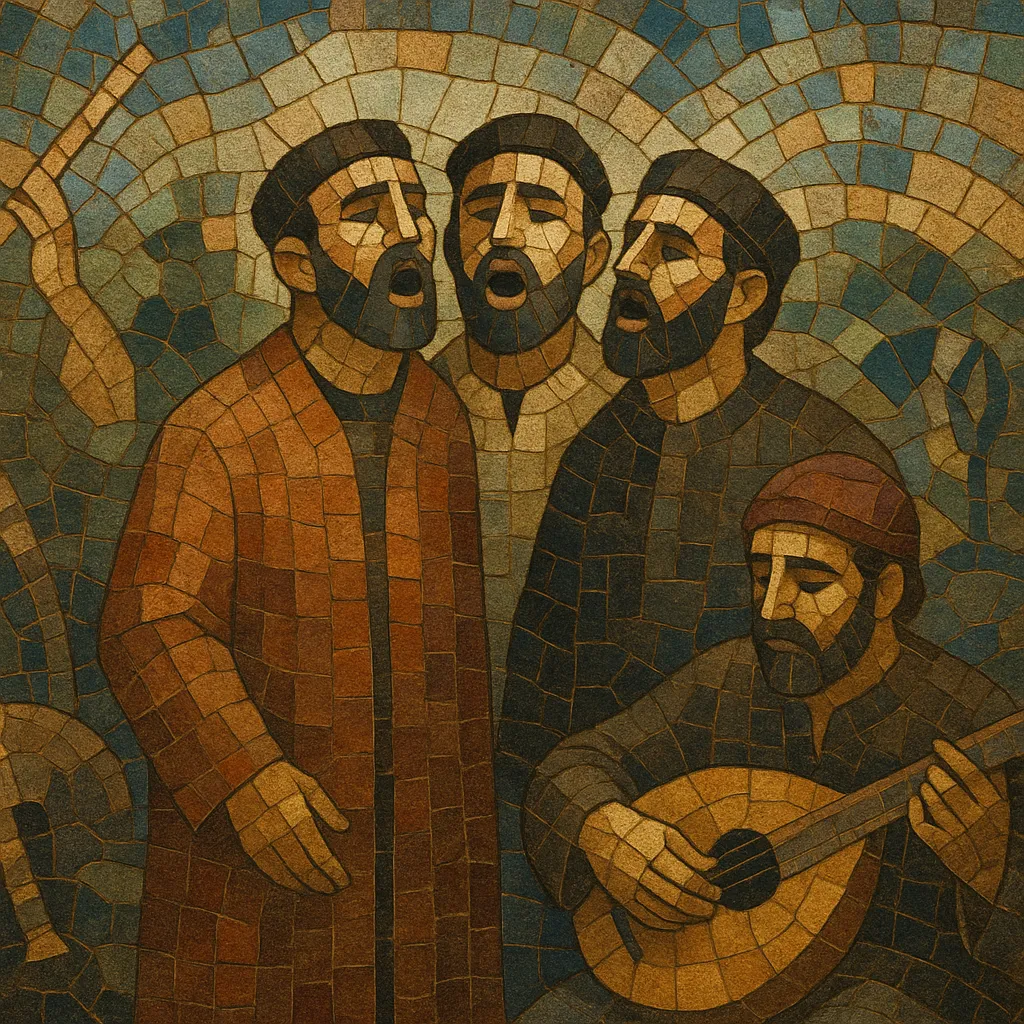Corsican folk music is the traditional music of the island of Corsica, renowned for its striking, three‑part a cappella polyphony known as paghjella. Typically sung by male voices standing very close together, the parts—bassu (low drone), secunda (lead/middle), and terza (high)—weave dense, modal harmonies rich in overtones.
The repertoire spans sacred and secular spheres: liturgical chants and hymns, improvised call‑and‑response verse contests (chjami è rispondi), love songs, lullabies, and lamentations (voceru). Timbres are robust and nasal, intonation favors modal scales with flexible tuning, and performance often begins with the secunda “setting” the pitch before bassu and terza enter. While predominantly vocal and unaccompanied, instruments such as the cetera corsa (Corsican cittern), flute, violin, guitar, or accordion may accompany dances and newer arrangements.
Corsican polyphonic singing likely coalesced between the 1600s and 1700s, shaped by Roman Catholic liturgical chant and broader Italian musical culture during Genoese rule. Communities transmitted songs orally, cultivating a distinct three‑voice structure—bassu, secunda, terza—used in sacred offices and village festivities alike.
By the 19th century, secular genres such as serenades, pastoral songs, and lamentations (voceru) circulated alongside parish repertoire. The music remained largely unnotated and community‑based. In the mid‑20th century, urbanization and changing social structures led to a decline in everyday practice and fewer younger singers mastering the style.
A cultural renaissance known as the riacquistu in the 1970s reignited interest in Corsican language and heritage. Vocal ensembles began to research, teach, and record paghjella and related forms, raising the profile of Corsican music in France and abroad. This period also saw careful reconstruction of the cetera and renewed use of traditional instruments in dance and popular contexts.
In 2009, Corsican paghjella was inscribed by UNESCO on the List of Intangible Cultural Heritage in Need of Urgent Safeguarding, underscoring both its significance and fragility. Today, renowned ensembles perform internationally, collaborate across genres, and balance faithful transmission with sensitive innovation, ensuring that village practices, sacred repertories, and staged concerts continue to inform one another.


